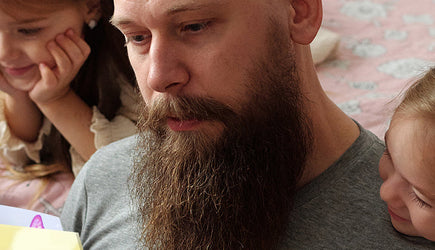10% Off Your First Order
Be first to know about new stories and offers

The holiday season brings with it a sense of warmth, wonder and togetherness. One of the most cherished ways families celebrate is by gathering around a book and reading tales of reindeer, snowflakes and festive cheer. In recent years, personalized Christmas books have gained popularity for their ability to turn a young reader into the hero of the story. These bespoke stories weave a child’s name, likeness and personal details into each page, creating a keepsake that can be returned to year after year. Beyond simple entertainment, studies show that personalised storytelling can make reading more engaging and meaningful for little ones.
A 2012 study found that parents reading personalised stories with toddlers saw more smiles and laughter, making story time not just a nightly ritual but a moment to bond and share joy. Those moments become treasured memories, stamped with the child’s sense of wonder. Throughout this guide, you’ll discover why personalised Christmas books hold a special place under the tree, and how they can spark a lifelong love of reading.
Traditional storybooks follow a fixed cast of characters and settings, but personalised books invite one unique element: the reader. By placing a child’s name, appearance and even hometown inside the narrative, every turn of the page holds an extra spark of recognition. When young readers spot their own name on the title page or glimpse their likeness in an illustration, the story no longer feels distant. It feels personal. This sense of ownership transforms a routine bedtime read into an adventure tailored just for them.
Research underscores the value of this approach. Children exposed to customised sections in a story retain new vocabulary far better than when the same text appears in a generic format. They also develop stronger confidence as readers. By age 14, those who grew up enjoying personal storybooks can read at levels nearly three years ahead of peers who did not. Seeing themselves triumph, overcoming snowy brambles or delivering a special holiday gift, boosts their sense of worth. Experts note a rise in self-esteem when kids realize they are the protagonist of their own tale.
In addition to cognitive gains, personalised stories help nurture empathy. When a child named Ava shares the page with a diverse cast of characters, perhaps a friend in a wheelchair or a cousin living in another country, she learns to see the world through multiple lenses. This inclusive approach mirrors the mission at StoryBug, which celebrates every youngster’s background and ability, making each tale both welcoming and inspiring. The company’s goal is to empower readers by placing them at the heart of a creative, self-expressive narrative.
When selecting a customised Christmas book, start by considering your child’s reading stage. For the first christmas book for toddlers (ages 2–4), look for short sentences, large type and vivid illustrations that reinforce new words. Board-book formats work best, with sturdy pages for little hands. Pre-schoolers (ages 4–6) can handle slightly more text per page and simple interactive elements like lift-the-flap or touch-and-feel textures. Early readers (ages 6–8) appreciate stories with repetitive key phrases, rhymes and short chapters they can tackle independently.
Adventure is a timeless draw, but childhood also thrives on connection. Friendly sidekicks, family traditions and acts of giving can deepen the festive spirit. For instance, a story about delivering handmade gifts sparks discussion about generosity. Narratives that highlight cooperation, like elves working as a team, teach social skills. You may also choose narratives that touch on siblings, pets or cultural customs. The sense of familiarity makes each page feel more meaningful.
Review sample spreads on a publisher’s website to see how they integrate personalization. Do they let you set the character’s hair colour, skin tone or even preferred pronoun? These details signal an inclusive approach. At Story Bug, for example, every book allows for a range of backgrounds and abilities, inviting empathy by reflecting the real world in charming, age-appropriate ways.

A personalized book gains extra charm when presented as part of a coordinated gift set. Include a matching ornament stamped with the child’s name and year. Soft holiday pyjamas in a coordinating design invite cosy reading nights. A plush toy that resembles the story’s animal sidekick completes the ensemble. Tying these items together in a festive basket turns unwrapping into a delightful scavenger hunt.
For families who enjoy baking, wrap the book alongside a simple cookie mix and a personalised recipe card featuring an elf or reindeer motif. This pairing brings the story to life through a hands-on activity. Baking gingerbread men while reading about a friendly snowman who loves sweets becomes a shared experience that lingers well after the final page.
Customized stockings can hold smaller book editions, creating a daily countdown as each stocking unveils a new chapter or themed adventure. This book advent concept extends holiday excitement throughout December and encourages consistent reading habits. Place a small treat or note inside each stocking to complement the tale for the day.
Writing a dedication message elevates the gift’s emotional value. A few heartfelt lines can reflect hopes for a child’s imagination or celebrate the special bond between reader and loved one. Mention shared memories, like reading past holiday stories under twinkling lights, and promise new Christmas adventures story books ahead. A handwritten note on quality stationery adds a personal flourish that digital printouts cannot match.
When gifting to extended family, consider adding a group photo or a family tree illustration. This approach broadens the narrative, highlighting connections across cousins, aunts and grandparents. Each participant can sign a message at the end of the book, creating a collective time capsule to be revisited each year.
Some publishers offer keepsake boxes designed to store personalised stories alongside letters, drawings or small mementos. Encourage children to add their own bookmarks or illustrations over time. These boxes transform into living archives of holiday traditions and personal growth.
Gifts that combine sensory elements, such as scented candles that evoke pine forests or cinnamon, can immerse young readers in the atmosphere of the story. A ribbon-tied bundle featuring a matching cocoa mug, a small blanket and the book turns an ordinary present into an invitation for multi-sensory storytelling sessions.
Set aside one evening each December for “Personalised Book Night.” Dim the lights, light a few candles or string lights, and allow the child to lead the read-aloud portion. Encourage siblings to chime in with their favourite lines. This active participation fosters speaking and listening skills and builds confidence.
An advent calendar of customised mini-stories can last until Christmas morning. Each day, the child unwraps a page or chapter. Over time, they build anticipation and learn the value of pacing themselves,a key skill for early readers. By Christmas Eve, they’ll have a complete tale that reflects their names, hometown or even family pets woven throughout the plot.
Create a reading nook using a small canopy of holiday fabric or simple bed sheets. String battery-operated lights overhead and drape ribbons to evoke a winter canopy. Scatter soft pillows and fluffy rugs on the floor. Add a small speaker playing gentle holiday melodies at low volume to set a calming mood.
Layer sensory details into each session. Offer mugs of spiced cider or warm milk with a sprinkle of cinnamon. Provide lightweight throw blankets in festive patterns and soft plush toys that match story characters. These elements invite children to linger over each page and savour the narrative atmosphere.
Expressive reading techniques help characters come alive. Vary tone and pace to suit different scenes, whisper during suspenseful moments and speak with gusto for joyful celebrations. Use simple props like felt shapes or paper cut-outs to illustrate points. For interactive scenes, invite children to mimic sounds, such as jingling bells or crunching snow underfoot.
Pause periodically to ask open-ended questions that draw children into the plot. Inquire about alternative endings they might imagine or ask them to predict what a character will do next. These prompts foster active engagement and build critical thinking skills. Encourage them to use their own experiences, favourite family traditions or personal aspirations, to connect with the narrative.
Present interactive features that many personalised titles offer. Lift-the-flap surprises, hidden name reveals and augmented reality elements invite hands-on exploration. Celebrate each discovery with cheers and claps, turning every page into a mini celebration.
Integrate gentle movement into the story. Act out a character’s walk through a snowy forest or mimic the sway of a decorated tree in the wind. This kinaesthetic component appeals to young readers who learn best through physical activity.
Provide art supplies nearby so children can draw their favourite scenes immediately after reading. Display their creations on a holiday-themed wall or fridge gallery. This visual record of story time fosters pride and encourages repeated reads.
Personalised storytelling isn’t limited to December. Many publishers offer birthday adventures, graduation keepsakes and milestone narratives, like welcoming a new sibling. When a child sees their name in a story about winning a trophy or hosting a tea party, they associate reading with personal achievement. That positive link encourages lifelong reading habits.
Consider ordering a set of four personalised titles: one for each quarter of the year. This seasonal approach turns reading into a year-round celebration and strengthens learning consistency. You might include a spring garden tale, a summer beach expedition, an autumn pumpkin-patch mystery and a winter wonderland––all starring your child in the lead role.
Personalised Christmas books do more than fill a stocking. They offer a combination of cognitive, emotional and social benefits that regular books can’t match. From improved word acquisition to boosted confidence and empathy, these tailor-made stories help shape young minds. As children see themselves as heroes, they develop a stronger sense of self-worth and a genuine love of reading.
Companies like Story Bug dedicate themselves to crafting narratives that reflect diverse backgrounds and abilities. Their inclusive approach not only broadens a child’s understanding of the world but also confirms, on every page, that they matter.
 Personalized Storybooks | Psychology Behind Personal Names
Children Seeing Their Name in a Story Kids light up when they hear their own name in a story. Personalizing a tale makes it feel special. It pulls them in. Calls to mind their own world. A name can spark...
July 3, 2025
Personalized Storybooks | Psychology Behind Personal Names
Children Seeing Their Name in a Story Kids light up when they hear their own name in a story. Personalizing a tale makes it feel special. It pulls them in. Calls to mind their own world. A name can spark...
July 3, 2025
 Personalized Storybooks vs Traditional Storybooks: A Deep Dive
Reading has long been a cornerstone of early learning. Parents and educators debate which format best supports cognitive growth and literacy skills. Two clear contenders are traditional storybooks and personalized storybooks...
June 27, 2025
Personalized Storybooks vs Traditional Storybooks: A Deep Dive
Reading has long been a cornerstone of early learning. Parents and educators debate which format best supports cognitive growth and literacy skills. Two clear contenders are traditional storybooks and personalized storybooks...
June 27, 2025
 Easter Memories That Bloom Forever: Beyond the Chocolate Eggs
Easter is a season of sweet treats, joyful gatherings, and the delightful thrill of egg hunts. But what if you could capture the magic of this special time..
March 3, 2025
Easter Memories That Bloom Forever: Beyond the Chocolate Eggs
Easter is a season of sweet treats, joyful gatherings, and the delightful thrill of egg hunts. But what if you could capture the magic of this special time..
March 3, 2025